Takom 1/72 Silbervogel "Amerika Bomber"
This is the second model I have built during my forced downtime due to stomach surgery. I don't normally build hypothetical planes, and I also don't like to build models with a natural metal finish (because I don't do NMF very well), but this model was just too cool to ignore.
Background:
The Silbervogel (Silver Bird) was designed in response to the Amerika Bomber Project in the late 1930s. In a time when submissions for the Amerika Bomber were piston-driven, engineers Eugen Sanger and Irene Bredt designed a liquid-propellant rocket-powered sub-orbital bomber. This project went as far as wind tunnel testing, but by the mid-1940s, shortages of strategic materials doomed this project to the shelf.
The mission profile is nothing short of amazing. The mission would start with a launch from a 3 km rail track by a rocket powered sled. When the sled reached 1200 mph, the plane would detach and climb to an altitude of 90 miles using its own power. At this point, traveling about 13,500 mph, the plane would cut its engines and gradually descend until it would reach the stratosphere, where the flat bottom of the plane would skip off the denser air, propelling it to a higher altitude. It would repeat this climb and skip profile until it arrived at its target in America, and drop its 8,800 pound bomb. It would then climb and repeat the climb and skip profile until it landed at one of the Japanese-held areas in the Pacific. This plane was calculated to have a range of 12,000 to 15,000 miles. In an interesting post-script, Allied engineers became interested in building an airplane based on this concept following the war. They discovered that Sanger and Bredt had made a computational error regarding the heat build-up that would be generated as the plane skipped off the stratosphere. These later calculations showed that the heat would have risen to a critical level and melted the plane.
There are several post-war developments that have to do with this plane. Sanger and Bredt went to work as engineers in France. Joseph Stalin was apparently very interested in the Silbervogel concept and had Russian spies attempt to convince the engineers to defect to Russia. They weren't successful. Engineers continued to use information gained from this project. America's X-20 Dyna-Soar project was based on a similar idea. The engines designed for the Silbervogel share a similar design to all modern rocket engines. In 1985, Messerschmitt-Bolkow-Blohm showed renewed interest in the "Sanger Spaceplane", but wanted to have it carried into space piggy-back on a launch vehicle.
The model:
This was a fun kit. You had a choice of either using a single- or double-seat cockpit. At first I wanted to use the two-seat configuration, but I decided to use the single-seat cockpit to match many of the bombers during WW2 that had just one pilot. I am assuming here that the single pilot would have some way to stretch their legs and take bathroom breaks. The cockpit is very simple, and I added some instruments, side panels, and seatbelts. This is a long, tail-heavy model, and the instructions call for 30 grams of weight to be added to the nose. I added about 40 grams, just to be sure. Everything fits perfectly, but the wings and tail have no tabs to join them to the fuselage. The kit includes decals for 4 hypothetical bombers, and I created my own paint scheme and used decals from all of the schemes. The decals have a flat surface, which I thought might give me problems hiding the clear carrier film, but they seem to have gone on fine.
This was a fun build, but now I have to find some serious shelf space for this model. Cheers everyone.
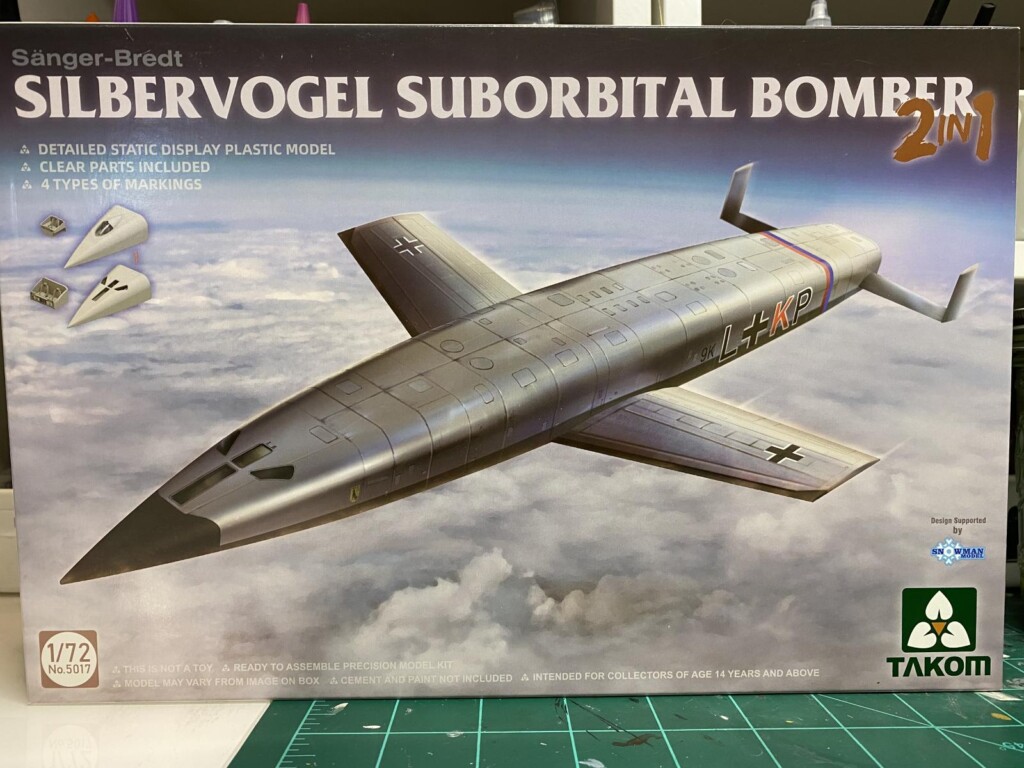
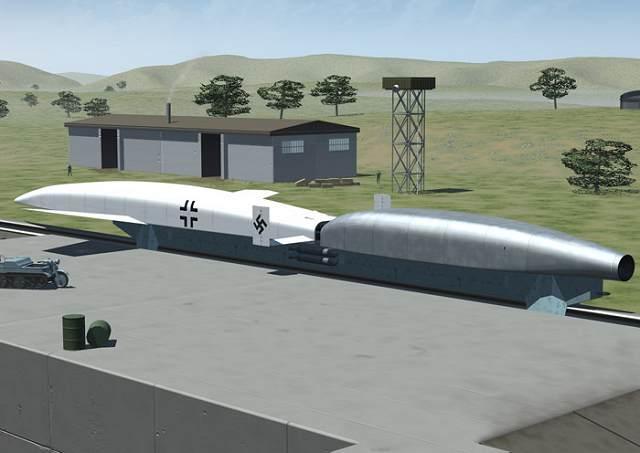
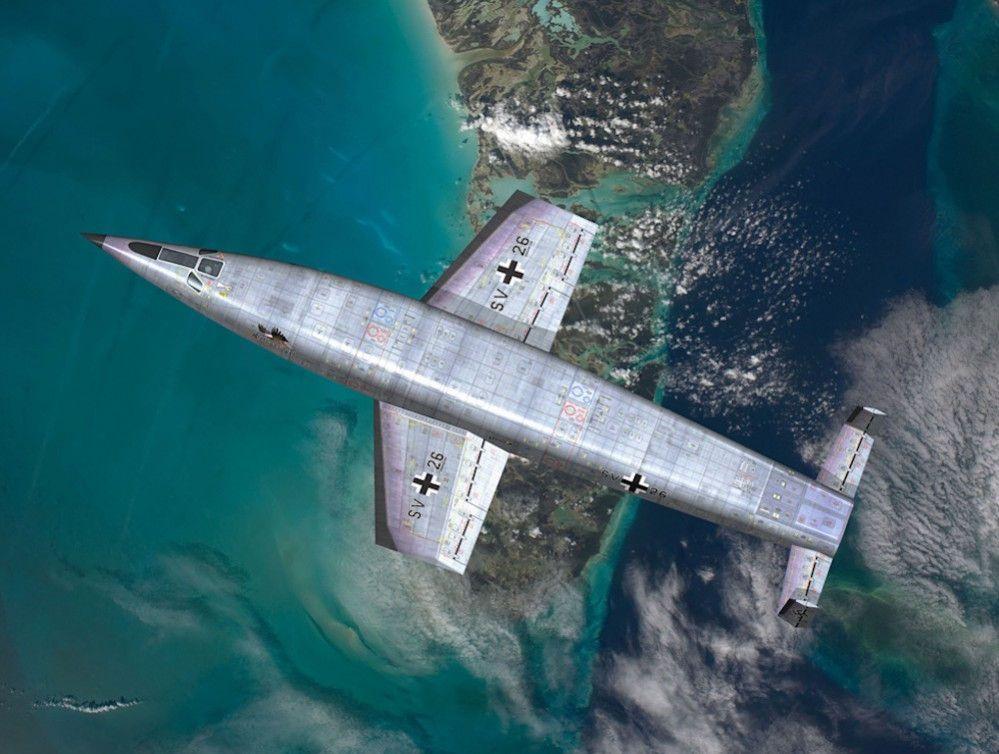
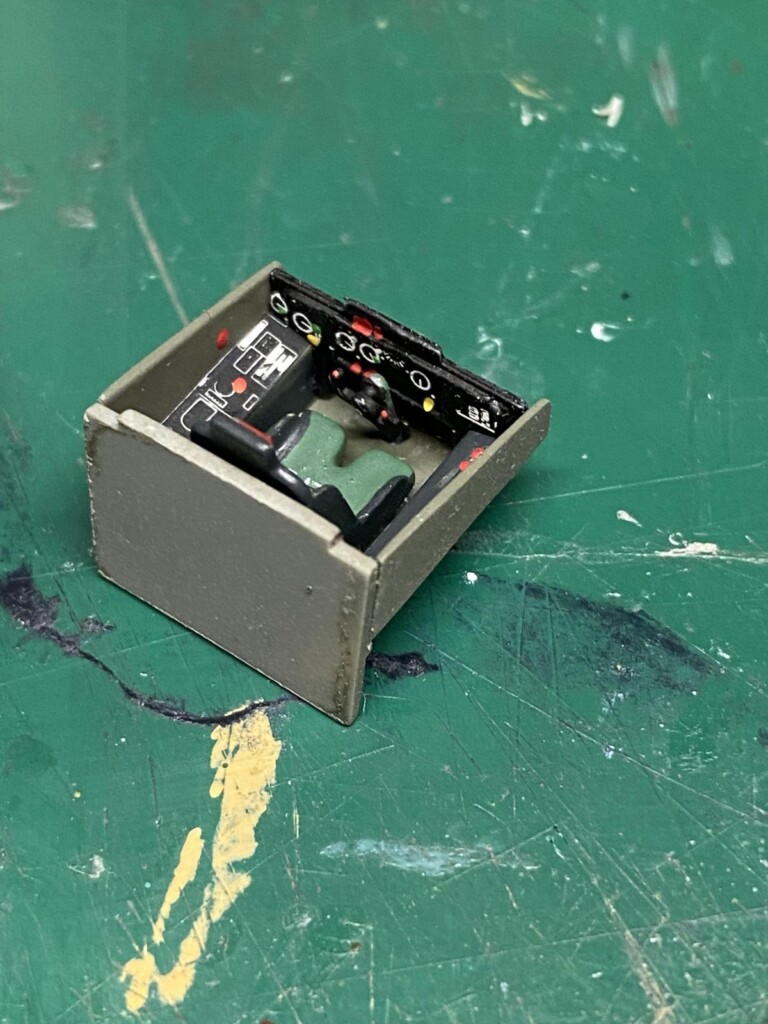
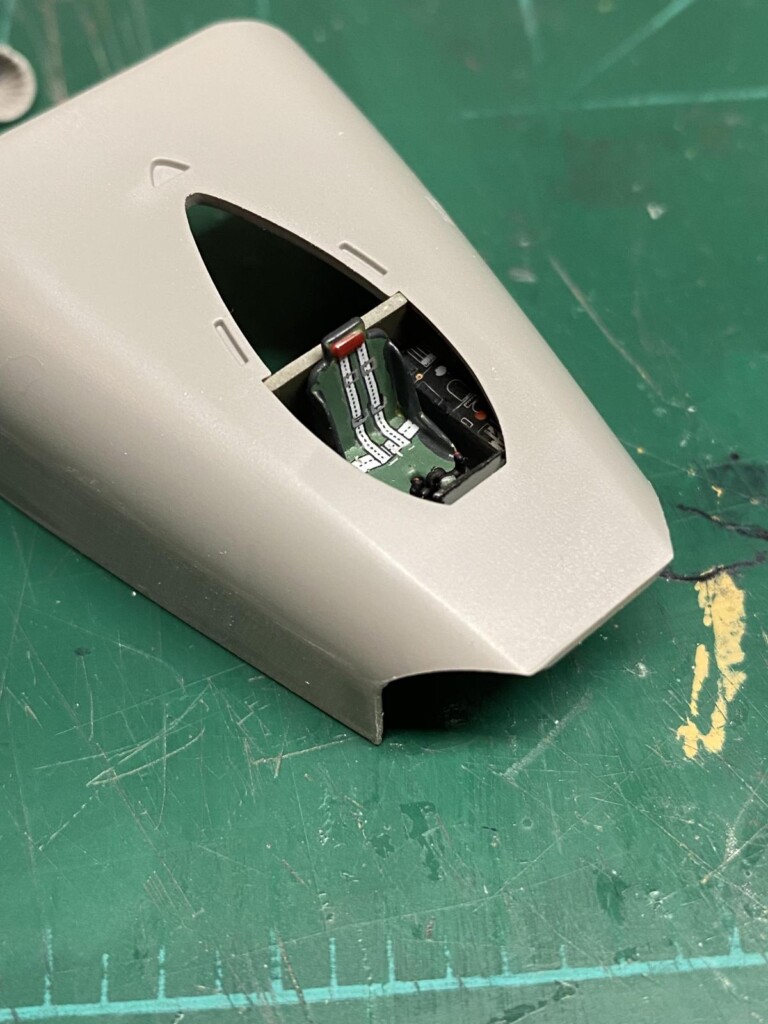
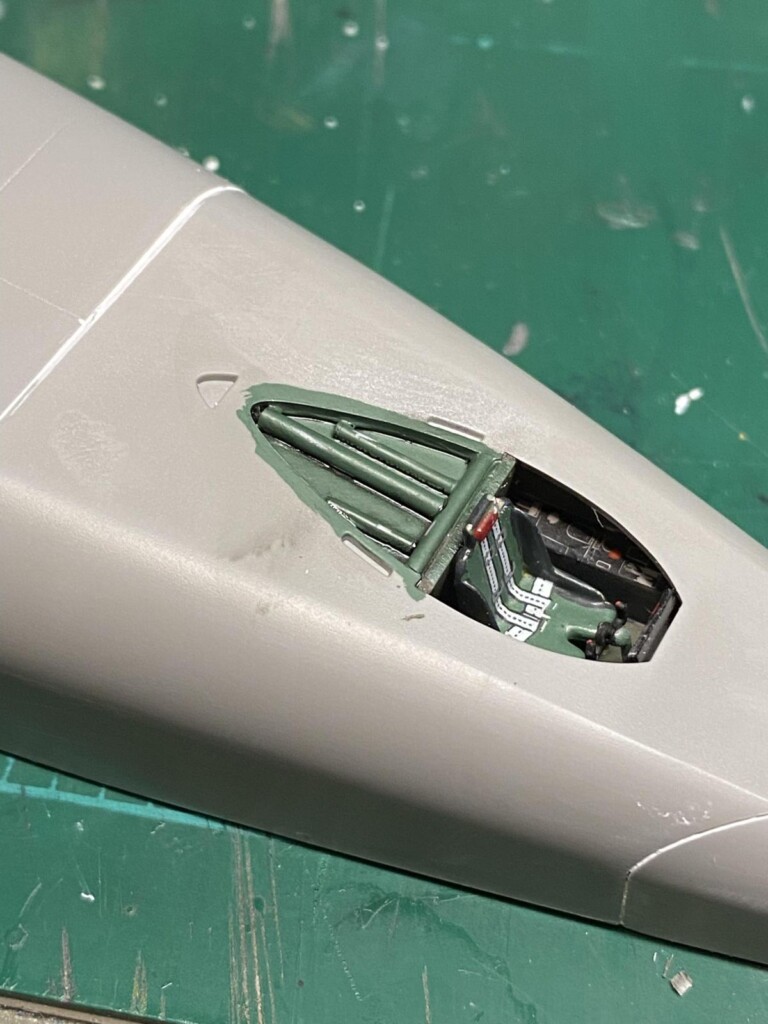
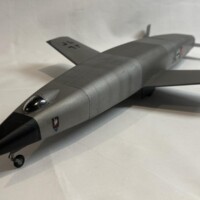
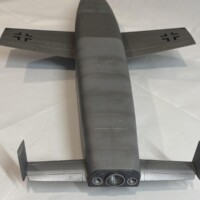
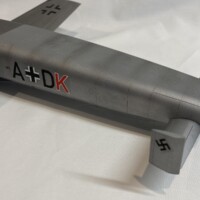
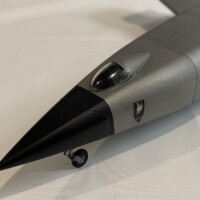
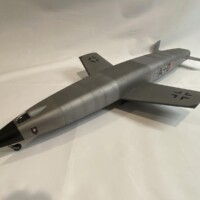
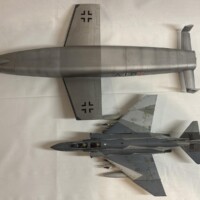

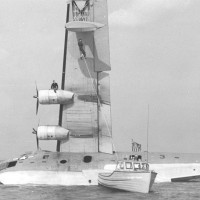
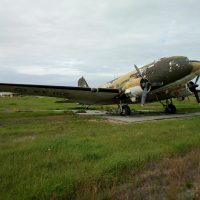
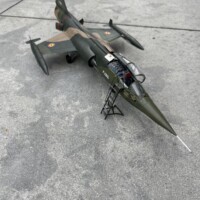
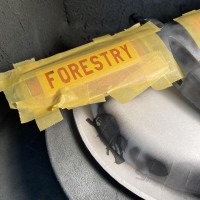
George R Blair Jr (@gblair)
This is another great looking model. The background story behind the real concept is equally as interesting. The Germans were years ahead of everyone else in most of technological areas. Thankfully for us, (and the rest of the world), things turned out the way they did as far as how the war ended, or today's society would be very different.
Your metal finish looks outstanding. I know that I am way too hard on myself. I tend to be my own worst critic. I believe that you are also too critical of your work. This is an excellent model. I don't ever recall seeing another one like it before.
The closest thing to anything like it that I have seen, was a television show that I believe was called "Secret Luftwaffe Aircraft". It aired on the History Channel several years ago.
Thanks for placing the F-4 next to it. This gives us a good idea of just how big this would have been.
I definitely clicked on the "like" button.
Thanks for sharing it with us.
I wish you a speedy recovery.
Thanks, Louis (@lgardner). It is scary to think what might have happened if the Germans had more development time in WW2. This is a really nice kit. I have always had good luck with Takom. I used Vallejo metals for the finish, which seem to work well for me. I remember seeing the History Channel show you are talking about. I also have a book that has the info on these "paper" designs.
Well, that's something you don't see every day!
Very nice work, George @gblair - the NMF looks like it was done by someone who likes doing that.
Thanks, Tom (@tcinla). Thanks for the kind words on the NMF. I am working toward doing a 1/48 plane in NMF. I like the Vallejo metals I used. I haven't really tried any others.
Great model, George, but what a crazy idea, they must have been smoking some strong stuff.
Thanks, George (@chinesegeorge). Can you imagine being the first test pilot and watching the plane melt around you? Oops.
Interesting aircraft, something Hogan's Heros would have tried to get the plans, [the show comes on 10:00 pm by me]. Great looking build, nice job with the NMF. Nice looking Heater Ferris F-4.
Thanks, Robert (@roofrat). I would bet Hogan would find a way to get the plans. I am still not very comfortable with NMF, but I have had good luck with Vallejo metals. The Ferris schemes are my favorites for F-4s, F-14s, and I think they did an A-4 also.
Way back in the before time we had one for a while, VF-74, all we did was put a side number on it,211.
1 attached image. Click to enlarge.
I love it, Robert (@roofrat). Nothing looks as good as an F-4. I still remember the first time I saw the Thunderbirds flying F-4s. The ground would shake when they did a low, fast flyby.
Very cool model of an intriguing bit of history. I'd also like to note that the NMF looks great on this big bad machine, thank you for sharing something so unique!
Thanks, Andrew (@pb_legend). I'm glad this thing never made it into the air during the war.
No doubt!
Very nice George. Impressive machine and great metallic paint work.
Have a speedy recovery .
Thanks, Bernard (@bernardbedeur). This was a cool project to do. This is the first surgery I have ever had. Not bad considering I am 72, so hopefully the last.
Looks fantastic, George! Your NMF results are excellent!
I was really amazed by the mission profile!
Thanks, Spiros (@fiveten). Baby steps with the NMF. Very imaginative plan for WW2.
Echoing all the above comments, George @gblair
The NMF does indeed look very realistic.
Nice to read, supporting article as well on this fictional aircraft.
Thanks, John (@johnb). It was a fun and easy build.
Nice work, George. I love that Phantom too!
Thanks, John (@j-healy). Phantoms are one of my favorites.
Wow comes to mind on this build George. German engineers were really thinking out side the box on this one. You think maybe our engineers lifted this idea with our research on lifting/flying bodies instead of wings? The NMF finish looks great to me George, and I hope your recovery after surgery proceeds well.
Thanks for the kind words, Tom (@tom-bebout). It is sort of scary when you look at all of the really advanced projects that the Germans almost got done in WW2. This is why there was such a scramble trying to find the German scientists as the war wound down. I am my own worst enemy with the recovery from the surgery. I am not supposed to be lifting stuff for a while, but that is hard to remember until I do too much and things start hurting.
Well, as much as I like this weird monstrosity, I REALLY like the Phantom you parked next to it! I don't think I'd seen that build of yours before. I just got decals in for the 3-gray scheme on a Shamrocks F-4S...
Thanks, Greg (@gkittinger). This one was just too cool to pass up. My first assignment in the Air Force was at Luke AFB, which was the F-4C RTU at the time. Phantoms have been my favorite since.